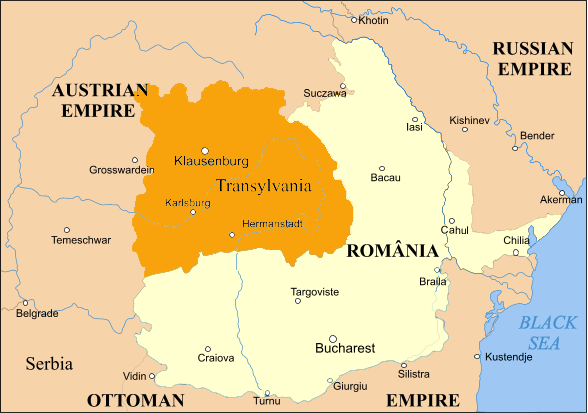History special: 160 years since the Small Union, the first step towards a modern Romania



160 years ago, in 1859, the unification of Romanian principalities Moldova and Tara Romaneasca (Wallachia) under the same ruling prince marked a first step towards one of the Romanian nation’s most important political goals – the union of all provinces where Romanians were in majority. Remembered by history as the “Small Union,” the two principalities’ unification was not an easy thing to achieve, being the result a long and difficult historical process.
A first step that led to the unification of the principalities of Moldova and Tara Romaneasca was taken in 1848 when the customs union between Moldova and Tara Romaneasca took place during the reigns of Mihail Sturdza and Gheorghe Bibescu. Mihail Sturdza was prince of Moldova from 1834 to 1849 while Gheorghe Bibescu was hospodar of Tara Romaneasca between 1843 and 1848.
The unification idea became a main theme in the political debate, both in the two principalities and internationally, after the Crimean War (1853-1856), when the Russian Empire was defeated by an alliance of the Ottoman Empire, the Second French Empire, the British Empire and the Kingdom of Sardinia. The Treaty of Paris, signed at the end of the war, in March 1856, also included provisions referring to the principalities of Moldova and Tara Romaneasca. For example, a project of a referendum was to be set in place to monitor the will of the people on unification.
In this sense, ad-hoc meetings were held, discussing the elections for the Ad-hoc Divans, which were to decide on the political and social organization of the Romanian territories. In Tara Romaneasca, most members of the Ad-hoc Divan said yes to the Union, but in Moldova things started to take a controversial turn after the electoral lists for representation in the Ad-hoc Divan were forged. The discovery sparked scandals both among Romanians and at European level. In the autumn of 1857, following new elections, the Ad-hoc Divans of both principalities said yeas to the Union.
In 1858, the Paris Convention set several provisions referring to the Romanian principalities, including the partial unification of the principalities of Moldova and Tara Romaneasca, under the name "The United Principalities of Moldova and Tara Romaneasca." However, elections for the Ad-hoc Divan in 1859 profited from an ambiguity in the text of the final agreement, which, while specifying two thrones, did not prevent the same person from occupying both thrones simultaneously.
As a result, on January 5, 1859, Alexandru Ioan Cuza was voted ruling prince (domnitor) of Moldova. Then, on January 24, Cuza was also voted ruler of Tara Romaneasca. He ruled between 1859 and 1866.
 United Principalities - Photo source: Wikipedia / Olahus
United Principalities - Photo source: Wikipedia / OlahusAlthough the unification of the two principalities took place and respected the Paris Convention, it still had to wait for international recognition. However, Cuza took further steps to unify the administrations of the two Romanian principalities and gain international recognition for the Union.
He also adopted several reforms that contributed to the modernization of the Romanian society, laying the foundation of modern Romania. One of the first measures taken during his rule was to increase the state’s land resources by seizing, in 1863, the assets of monasteries in the country. Another reform with major impact was the agrarian reform of 1864, a landmark one in the country’s modern history as it abolished any feudalism remains. More about Cuza’s reforms in this article: The men who made the Union: Cuza’s reforms laid the foundation of modern Romania.
This year on January 24, Romania celebrates 160 years since the 1859 Union of Romanian Principalities. Thus, several events marking this special day will be organized in major cities across the country. For example, Iasi, the former capital of Moldova, will host several events, including official manifestations, folk music concerts and the traditional Hora Unirii (Union Hora) dance. Moreover, according to the local media, president Klaus Iohannis will also go to Iasi. He will lay a wreath at the tomb of Alexandru Ioan Cuza and participate in a festive ceremony where a decree naming Iasi the Historical Capital of Romania will be signed.
Sources: Wikipedia, Centenarulromaniei.ro, Radioromaniacultural.ro, Alba24.ro
Irina Marica, irina.marica@romania-insider.com
(Opening photo source: Shutterstock)